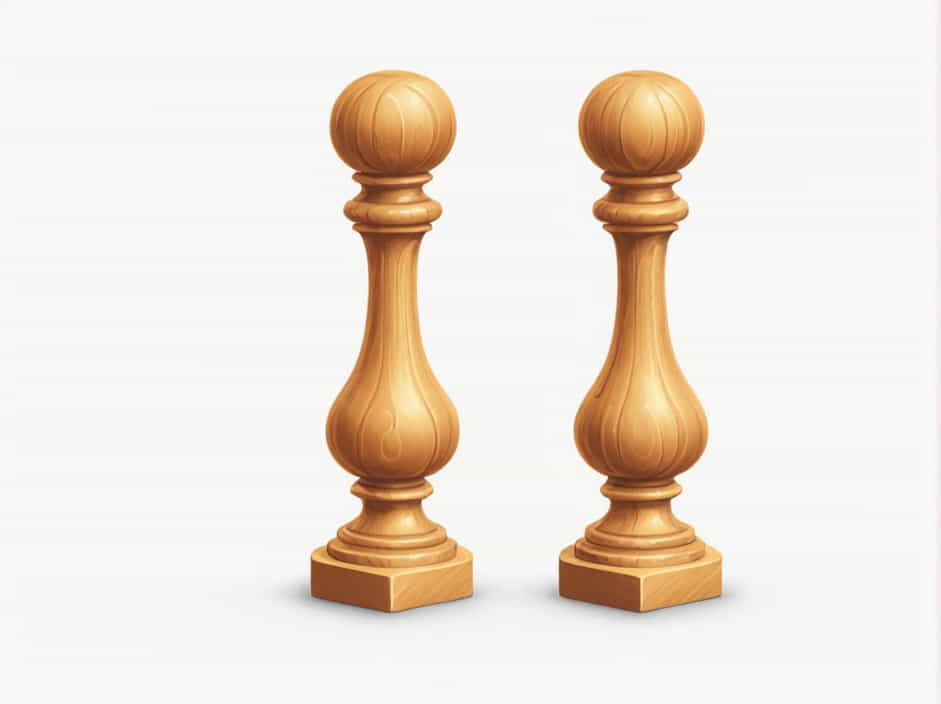When designing or building a deck, safety and aesthetics go hand in hand. One crucial component of deck railings is the baluster. But what exactly is a baluster, and why is it important? This guide will explain everything you need to know about balusters, their purpose, types, materials, and installation tips.
What Is a Baluster?
A baluster is a vertical post or spindle that supports a railing system on a deck, staircase, or balcony. Balusters are spaced evenly along the railing to create a secure barrier, preventing falls while adding an attractive design element.
Difference Between Balusters and Balustrades
Many people confuse balusters with balustrades. A baluster is a single vertical component, while a balustrade refers to the entire railing system, which includes balusters, handrails, and bottom rails.
The Purpose of Balusters on a Deck
1. Safety and Compliance
Balusters play a key role in making a deck safe by preventing people—especially children and pets—from falling off the edge. Building codes often specify the spacing between balusters to ensure safety.
2. Aesthetic Appeal
Balusters enhance the look of a deck by adding character and style. Whether you prefer a traditional, modern, or rustic design, there are balusters to match every preference.
3. Structural Support
While handrails provide stability, balusters help distribute weight evenly, making the railing system stronger and more durable.
Types of Balusters
Balusters come in various designs and materials, each with its own advantages.
1. Wooden Balusters
Wood balusters offer a classic and warm appearance. They can be carved into decorative shapes, making them ideal for traditional deck designs. However, they require regular maintenance to prevent rot and weather damage.
2. Metal Balusters
Metal balusters, usually made of aluminum, iron, or steel, provide a sleek and modern look. They are durable, low-maintenance, and resistant to weather conditions.
3. Glass Balusters
For a contemporary and open feel, glass balusters are an excellent choice. They offer unobstructed views while maintaining safety. However, they require frequent cleaning to keep them looking clear and pristine.
4. Vinyl Balusters
Vinyl balusters are a cost-effective and low-maintenance option. They resist moisture, insects, and UV rays, making them ideal for outdoor use. However, they may not offer the same level of elegance as wood or metal.
5. Composite Balusters
Made from a blend of wood fibers and plastic, composite balusters offer the beauty of wood with the durability of synthetic materials. They are resistant to rot and require minimal maintenance.
How to Choose the Right Balusters for Your Deck
1. Consider the Deck’s Style
Choose balusters that match the overall design of your deck. For example, wooden balusters suit a rustic or classic deck, while metal or glass balusters complement modern designs.
2. Check Local Building Codes
Ensure that your balusters meet local safety regulations, including the maximum spacing allowed between them. In most areas, the spacing should not exceed 4 inches to prevent small children from slipping through.
3. Think About Maintenance
Some materials, like wood, require regular staining and sealing, while others, like vinyl or metal, are virtually maintenance-free. Consider how much upkeep you’re willing to do.
4. Budget Matters
Baluster prices vary depending on the material and design. If you’re on a budget, vinyl or composite balusters might be a more affordable option than custom wood or glass balusters.
How to Install Balusters on a Deck
1. Measure and Plan the Spacing
Use a tape measure to mark the placement of each baluster, ensuring even spacing and compliance with safety codes.
2. Attach the Bottom Rail
Secure the bottom rail to the deck posts. This will serve as the base for attaching the balusters.
3. Install the Balusters
Attach each baluster securely to the bottom rail using screws or brackets. Make sure they are level and properly aligned.
4. Secure the Top Rail
Once all balusters are in place, install the top rail to complete the railing system. This provides stability and enhances the overall look of the deck.
5. Check for Stability
After installation, test the railing for sturdiness. Ensure that the balusters are tightly secured and do not wobble.
Maintenance Tips for Deck Balusters
- Regular Cleaning: Wash balusters with mild soap and water to remove dirt and debris.
- Inspect for Damage: Check for cracks, rust, or loose connections and make repairs as needed.
- Repaint or Reseal: If you have wooden balusters, apply a fresh coat of paint or sealant every few years to prevent weather damage.
- Tighten Screws and Bolts: Over time, fasteners may loosen. Periodically check and tighten them to maintain stability.
Balusters are an essential component of any deck railing system, offering both safety and style. Whether you prefer wood, metal, glass, vinyl, or composite balusters, choosing the right type can enhance the appearance and durability of your deck. By following proper installation and maintenance practices, you can ensure that your deck remains safe and visually appealing for years to come.
